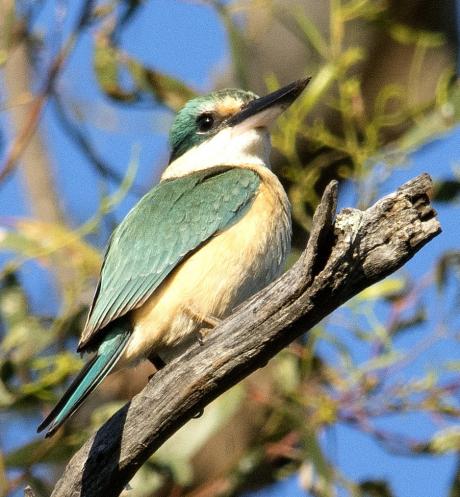Twitchathon Report / The Storkers / Virginia & Neil
 93 species compared with our usual 130+. It certainly confirms that we are in an unusual year.
93 species compared with our usual 130+. It certainly confirms that we are in an unusual year.
The new format meant a rethink of strategy, no overnight camping, no listening for night birds calling through the dark. (On the other hand, I don’t think we could have coped with camping out in these mozzies, so just as well.)
The Storkers concentrated on the Griffith area, starting at Binya before sunrise for bush birds, then going the rounds of the wetlands, with plans to get to the river but that didn’t happen. We all know how productive Wattle Dam can be. I have found twenty plus species within a hundred metres of the dam in previous Twitches. But this year… close to nothing. Obviously there is so much water around that the dam visitors do not need to come in, but neither were there any of the usual species that frequent the area without using the dam. No robins, no Speckled Warbler, no thornbills, no cuckoos, no pardalotes. We wondered if the other factor was the extreme overgrowth of Paterson’s Curse. The wet and mild winter creating lush conditions also means that the life cycle of the vegetation has been lengthened or delayed, so maybe the Twitch is too early this year (as compared with two weeks too late most years).
We tripped to Spring Creek in the vague hope of the Peregrine Falcon but all that we saw up the walk was a few thornbills … but wait … back at the car and consuming morning tea what happened but the Peregrine found us (thank you from the Storkers to the birdlife that advertised it’s arrival). The Winery site gave us a few ticks but we had to work hard for them, and some that we chased would not show themselves. We chased a Speckled Warbler for far too long without success.
Not prepared to give up on the bush birds just yet, we swung back up to Store Creek for lunch, and again … not much … but one of the best spottos of the day was Virginia’s Tawny Frogmouth nest with chick, made even better by the fact that we couldn’t find the Frogmouth later at the Golf Club. And on the road back out, while we were searching unsuccessfully for something completely different, we happened across a immature Olive-backed Oriole which we think was probably the best tick of the day.
So to the wetlands. Where are all the water birds? Certainly not around Griffith. Millions in the Macquarie Marshes I’ve heard. Heaps along the flooded Lachlan I’ve heard. And there are plenty of other flood areas. So there is no good reason for a bird to be sitting in our pissy little so called swamps! We will need to wait for the natural water to dry up before our irrigation water becomes attractive again. Along the canals … nothing. Poo Ponds … nothing. Saleyards … a dotterel. Lake Wyangan … a few Pelicans. Nericon … nothing. Campbell’s … a bit better, the Magpie Geese were still there and we spotted a solo Blue-billed Duck, but no sign of the Plumed-whistling Ducks or Musk Ducks that were there a couple days ago. Tharbogang Swamp … a very light sprinkling. No gulls, no terns, no egrets, no spoonbills, bugger all ibis.
So we had an hour to go. What to do? We decided to swing past the tip for Black Kite … sorry, they don’t seem to have arrived back from Queensland yet … then a quick trip out to Barren Box. Without a key, we looked in over the fence, and not expecting to see anything we weren’t disappointed. But outside the fence we were blessed with White-winged Wren, and a minute before cut-off a mob of twenty Emus ambled across the neighbouring paddock in the golden evening sun … bliss.
In summary: most common bird: Rufous Songlark which usually shut up and go to ground the week before the Twitchathon
More common than usual : Sacred Kingfisher
Often heard but never seen: Rufous Whistler
Water birds: species 50% down : numbers 99% down.
Birds of Prey: very thin, we got six species and probably 10 - 20 in number.
Honeyeaters: very light on … absent or quietly nesting?
Insect repellent: yes, volumes of the stuff!
Neil Palframan

